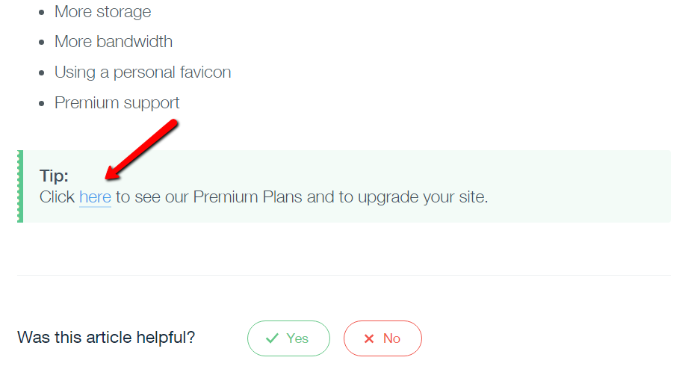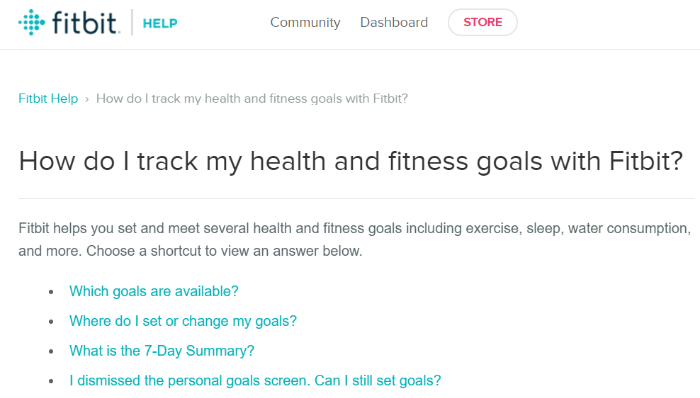You might already know how much money a quality knowledge base will save you in terms of reduced support costs.
But do you know that you can actually use all those knowledge base articles to generate revenue, too? I’m here to tell you that you can…if you spend a little time optimizing your knowledge base for conversions.
Conversions from a knowledge base!? I know, it sounds a little weird. But I promise you that it’s possible. Here’s how you can make some simple tweaks to your help center to draw in new customers and make more money from your existing customers…
Add a Call to Action to Your Relevant Articles
If you want people to do something, it usually helps to actually…ask them to do it. Not exactly a mind blowing, I know. But you’d be surprised how many people just expect readers to naturally complete an action without any prompting.
Maybe a few readers will…but the vast majority won’t.
So if you want to grab more conversions from your help center, you need to actually add a call to action telling people what you want them to do.
But because your help center is first and foremost always about offering support to your customers, you need to apply some filtering to avoid bombarding existing customers with requests to sign up.
Here are a few tips for adding call to actions to your knowledge base…
Keep An Eye on Where Visitors Come From
This is tip number one for choosing when to display a call to action in your knowledge base article:
Pay attention to where people are coming from.
If most visitors are coming to the page straight from Google, there’s a good chance that not all of them are existing customers.
On the other hand, if most of the traffic to an article comes from your own website, then those people are probably already familiar with your product (at a minimum).
So, if an article has a high percentage of traffic from Google, consider adding a CTA. If most of the traffic is already coming from your website, consider leaving it off.
And here’s the cool thing:
There are plenty of tools you can use to do both at the same time. Depending on a visitor’s referrer, you can choose to either display or hide your call to actions.
If you’re using WordPress and one of our knowledge base themes or plugins, you can tack on a plugin like Advanced Ads to display or hide call to actions depending on where your knowledge base’s visitors are coming from. You can also easily write your own plugin to accomplish the same thing.
If you’re using another knowledge base solution, you’ll need to check with your provider about how much control over HTML you have.
Pay Attention to the Intent of the Article
Another thing to watch out for is the intent of your knowledge base article. Think about general vs. specific queries.
If you have a knowledge base article like “best practices for keyword research”, that has a chance to bring in plenty of outside visitors. On the other hand, “how to turn on the flux capacitor widget in Super Cool Keyword Tool” is only going to be of use to people who are already your customers.
Likely, you’ll see a strong correlation between the intent of your articles and how much organic traffic they bring in. That to say, this type of analysis should yield a similar set of results as the previous referrer criterion.
Where to Add Your Call to Actions
When in doubt, the best place to add your call to action is typically at the end of your knowledge base article. It’s a natural next step. People just finished reading and now they’re wondering, “what’s next?”.
For example, look how Wix includes a call to action to upgrade to their premium plan at the end of some relevant help articles:

You can play around with placement to try to find which positioning works best for your specific traffic. But starting with placing it at the end of your articles is a good, unobtrusive way to get your feet wet.
Write Articles That Reach Customers on the Buyer’s Journey
The buyer’s journey is essentially the predictable three-stage process most buyers go through. You might’ve heard of it already – most versions map it out as something like:
- Awareness
- Consideration
- Decision
If you want to convert more customers to your product, you need to meet them at the various stages of their journey.
Now, most of this work should be done by your core website pages and blog, especially for the latter stages of the buyer’s journey. But that doesn’t mean your knowledge base can’t lend a helping hand…where it makes sense.
Try to write articles that reach people who are trying to figure out:
- What is actually causing the problem they’re experiencing.
- How they can better solve the problem that they’re experiencing
For example, this article from Fitbit is a perfect illustration of telling people how they can solve a pain point:

Yes, it’s still a help article specifically for Fitbit. But it will also hit people searching for phrases like “How do I track fitness goals”. Now, someone who’s trying to solve the problem of losing track of their fitness goals knows that Fitbit can help.
Look for opportunities where you can do something similar for your product. “Best practices” type articles are always a good bet. And “how to” articles that hit on generic topics instead of product-specific topics are another good option.
Remember Upsells
Up until now, I’ve focused mainly on getting new customers from your knowledge base. But what about using your help articles to get more value from the customers that you already have?
If you have a product or service with different pricing tiers, you can use your knowledge base to slyly push people towards a higher plan.
For example, look how Smugmug reminds customers that in order to use the super cool feature mentioned in the help article, customers will need to be on the Business plan or above:

Smugmug could’ve just written that text and called it a day. But instead, they made sure to actually link to the upgrade page.
You don’t want to be pushy in your help center. But casually reminding your existing customers of all the cool features that they’ll get if they upgrade is never a bad idea.
Wrapping Things Up
As always, you need to remember that the first goal of your knowledge base is to help your current customers. But once you’ve got that squared away, don’t leave money on the table:
Spend a few hours optimizing your knowledge base for conversions and make your help content work for you even more.
The post How to Make Your Knowledge Base Articles Hungry for Conversions appeared first on HeroThemes.
